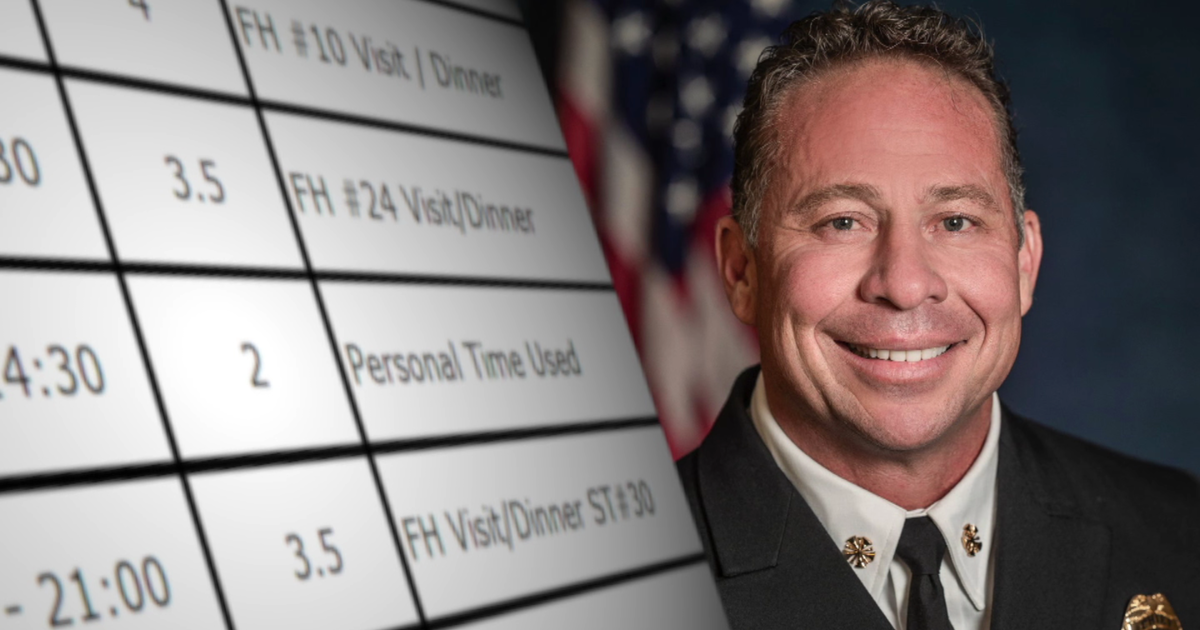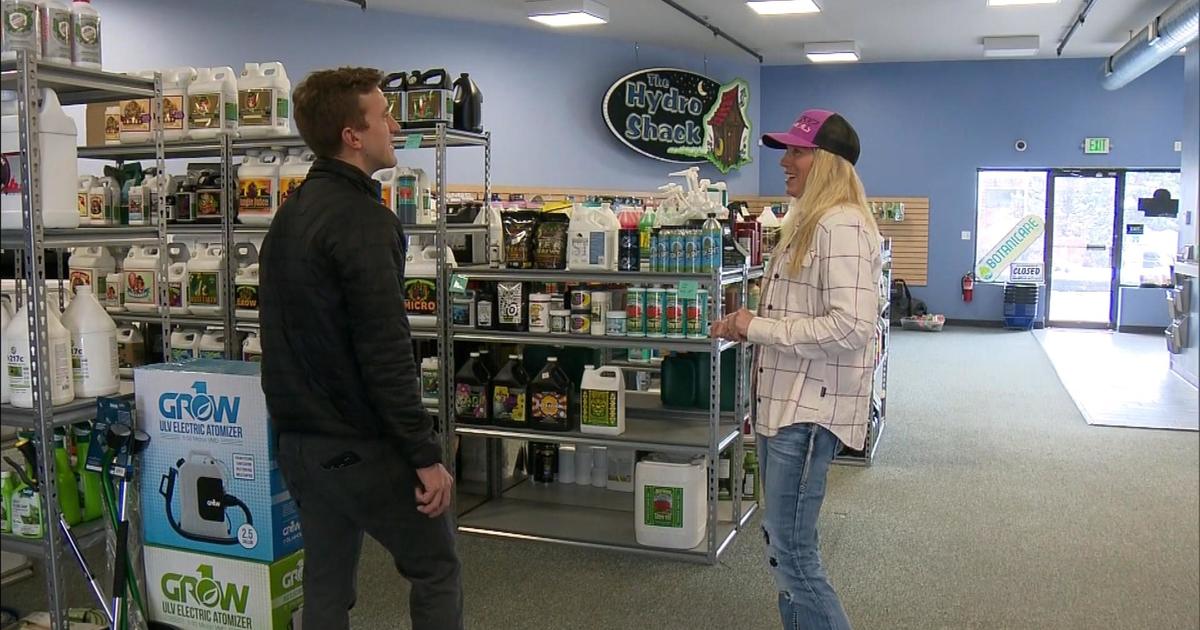Body Cameras: To Protect And Record
By Mark Ackerman and Brian Maass
Body-worn cameras are arguably one of the biggest advancements in policing in decades by creating new video evidence of officers' interactions with the public. Over the past five years, law enforcement agencies in Colorado have spent more than $10 million (roughly $2,000 for every body camera currently on Colorado streets) purchasing body camera technology — with the goals of increasing transparency, while decreasing excessive force incidents and citizen complaints. CBS4 set out to examine how the investment in body cameras was affecting policing and found no State agency or law enforcement union was tracking the use of body-worn camera technology. So CBS4 contacted every police department and sheriff's office in Colorado to determine which agencies have invested in body cameras and to ask how well their programs are working.
Currently, 22 of Colorado's 63 sheriff's offices have body cameras. Four more sheriffs plan to deploy body cameras by the end of 2017.
54 out of 109 Colorado police departments invested in body-worn cameras

One of the main selling points for body-worn cameras — the technology will result in fewer citizen complaints. The theory: the behavior of both citizens and police officers will improve when interactions between law enforcement and the public are recorded.
30 law enforcement agencies weighed in on our questions about the impact of body cameras on citizen complaints:
33% said complaints dropped since instituting body cameras, 7% said complaints increased, while 60% said complaints were about the same.

Body cameras have changed the way complaints are investigated — providing an "instant replay" to determine if an officer acted professionally or crossed the line.
Last November, Pueblo police officer Benjamin Candelaria was charged with sexually assaulting a woman after responding to a domestic violence call. Authorities say the officer's body camera showed him returning to the house after fellow officers left, having a sexual conversation with the woman, and then turning off the body camera. Candelaria resigned and is due in court October 5th for his arraignment.
In July 2016, a Commerce City police officer resigned after he chased an anti-police protester through traffic trying to arrest him. His own camera caught him shooting his Taser at the protester, which violated department policy. Another officer stepped in and put a stop to it, stating the protester was on public property and had a right to be there.
More frequently, police say body cameras are helping clear officers of false complaints which are often filed by people trying to avoid punishment.
Deputy Chief Lee Mathis of the Erie Police Department said the body camera often clarifies "he said, she said" complaints. Mathis pointed to one example where an officer stopped a woman for speeding. The motorist later filed a complaint stating the police officer lacked compassion for her health concerns. But, reviewing the officer's body camera, it was clear to Mathis that the officer acted professionally.
"It appeared to us that the officer did well and asked her several times if she was OK," said Mathis, who invites the public to view body-camera footage when there is a complaint. "Ninety-plus percent of our complaints we clear by looking at those videos."
PHOTO GALLERY: Click here to see how body cameras helped resolve each complaint.
In Southern Colorado, the Custer County Sheriff investigated a complaint that one of his deputies was rude and talked down to a man she pulled over for speeding in a school zone.
The speeder objected to the citation telling the deputy, "You shouldn't be writing tickets to people who live here in town. That's not right and if you do I'm going to fight it."
After reviewing the video, Sheriff Shannon Byerly said, "You can see his allegations were completely frivolous."
Lone Tree police arrested a man for false reporting after he filed a complaint claiming he was shoved and punched by a police officer while he was stopped for driving under the influence.
"We take it seriously and investigate every complaint," said Lone Tree police Chief Kirk Wilson.
Lone Tree police watched the video with the suspect who later agreed he was wrong.
"The officer was exonerated and the event never occurred," said Wilson.
The suspect pleaded guilty to false reporting.

Police body cameras are supposed to increase transparency by clearing up disagreements and citizen complaints. But each of the 76 Colorado law enforcement agencies using body cameras have their own policies for releasing video. Some departments had never released a video until we asked about it.
A Fort Collins mother whose son was shot and killed by police officers reached out to CBS4 when her requests to view footage of her son's death was denied.
Sue Holmes said her son Jeremy was in crisis last July when she called police for help.
"I regret that phone call to this day," she said she called police after her son started acting erratically and threatened to kill relatives.
"Jeremy was mentally ill," she said. "Officers said that was very important."
A Colorado State University police officer spotted Holmes armed with a knife near campus. According to the District Attorney, the officer backpedaled and ordered Holmes to drop the knife 36 times, while Holmes demanded the officer shoot and kill him.
"Jeremy did not want to hurt the CSU officer," she said. "He was asking him to kill him. He's saying I need help."
Then a Fort Collins police officer arrived on scene, saw a fellow officer in trouble and opened fire. Jeremy Holmes was shot six times total, with both police officers firing shots.
The shooting was captured on both of the officers' body cameras and District Attorney Cliff Riedel told CBS4 he watched them. Riedel said the videos showed Holmes charged the CSU police officer. He cleared both officers of any wrongdoing in his decision letter in July but, months later, Sue Holmes still hasn't been allowed to see the video.
LINK: Holmes Shooting Decision Letter
"This is like an open wound," Holmes said. "I need to know what happened to my son."
The Fort Collins police department said it is waiting for a citizen review board to weigh in before releasing the video.

When Holmes died on July 1, he was the fourth Coloradan shot and killed by police in two days. In the other three shootings, which took place in Westminster, Denver and Larimer County, there was no body camera footage.
The Knuppel family in Larimer County wishes there was body camera footage of their son's death. Chet Knuppel was drunk, stole his father's car and crashed it. He then threatened to carjack a couple that stopped to help. Knuppel later ran into a farmer's field and was shot by deputies.
Chet Knuppel was unarmed.
The Larimer County Sherif's office does not use body camera so there is no video of what happened. A snippet of audio from the Deputy's open microphone was released. You could hear the Deputy ordering Knuppel to "get down" before he was shot. But without video it is impossible to know what the Deputy saw.
"What they saw they perceived as a weapon," explained Sheriff Justin Smith. "We had a lot of reasons to believe that individual was armed and he wanted people to believe he was armed and told several people he was willing to kill."
The District Attorney Riedel ruled the Knuppel shooting justified and will not pursue criminal charges against the deputy who shot him.
LINK: Knuppel Shooting Decision Letter
"That's one of those cases that we didn't hear a big public out roar because we've done a lot to create trust in the public," Smith said.
Smith said he's shied away from body cameras because they are costly, they take a lot of manpower to process videos and he'd rather budget for more deputies on the street.
"It's not to say that body cams don't have value," Smith said. "But, there are companies that are making tens of millions of dollars off these technologies, and if they are driving decision-makers, we should ask why."

In 2017, police in Colorado have fatally shot 20 people. Yet, only eight of those 20 fatalities were captured by body cameras.
Why aren't we seeing more of these critical cases on camera?
Most of the time, it is because the officer involved wasn't issued a body camera. But, in some cases, crucial incidents are missed because an officer or deputy fails to hit the record button.
That's what happened in the case of Alejandro Gutierrez, who died after a fight with police officers last March. First, Thornton police officers, who aren't equipped with body cameras, approached Gutierrez outside of a convenience store investigating a drug complaint.
According to police documents, Gutierrez ran away and then fought with multiple officers.
Then two Federal Heights officers arrived, wearing body cameras that remained off and shocked Gutierrez twice with a Taser. Gutierrez lost consciousness. Finally, body cameras were turned on as officers started CPR in attempt to revive him.
"They just forgot to turn them on, was their explanation," said Adams County District Attorney Dave Young who decided not to charge officers in the Gutierrez death.
LINK: Read The Decision
"It is unfortunate in this case that we don't have the footage we could have had when they arrived on the scene," he said. "It's a problem with body cameras. They are only good if you turn them on."
This wasn't the first time the technology was there, but wasn't deployed properly.
A Kit Carson Sheriff's Deputy was not wearing his department-issued body camera when he shot and wounded a 16-year-old boy who aimed a BB gun at him seven months ago. The deputy had come from a court hearing and hadn't had time to put the camera on yet. However, in this case there was still tape: surveillance video clearly showed the teenager leaving a convenience store and pointing the weapon at the deputy. Despite the lack of body camera footage, it was clear the shooting was justified.
According to CBS4's body-camera questionnaire, fewer than 20 percent of agencies with body cameras have issued any punishments for failure to activate the technology. Of the departments that did, punishments ranged from verbal counseling to suspensions.
In Southern Colorado, 17-year-old Patrick O'Grady was shot while naked in the upstairs bathroom of his home in 2015. Fountain police officer Jonathan Kay claims O'Grady pointed a gun at him, then Kay opened fire. Kay did not turn on his body camera until after the shooting.
"Do I wish the video was on? Absolutely," said Fountain Police Chief Chris Heberer who said officer Kay made an honest mistake and thought he pressed the button activating his camera.
Now the officer and the town of Fountain are co-defendants in a wrongful death lawsuit.
"Since that incident we've changed our policy," said Heberer. "As soon as you are dispatched to a call you go ahead and initiate your camera. That takes out some of the stress of the situation."

A new generation of body cameras are helping make sure officers don't miss crucial moments. The Fort Collins, Castle Rock and Colorado Springs police departments have invested in technology that "automatically" activates body cameras, instead of relying on a police officer to remember to turn on the camera.
Sgt. Sam Varella (credit: CBS)
Sergeant Sam Varella with the Castle Rock police department demonstrated the technology for CBS4. The automatic activation technology turns on every police body camera nearby when the police car's light bar turns on, a gun rack is opened or a Taser is deployed.
"We didn't want to draw their focus from what's important," Varella said. "It gives them one less thing to think about," because, in an instant, a routine traffic stop can become dangerous.
Last May, Douglas County deputy Bradley Proulx stopped to assist a motorist pulled over on the side of the road. As soon as Proulx exited his vehicle, a rifle wielding man was outside of his vehicle and attacked him. Proulx shot and injured him. Proulx's body camera was on and working, but moving forward, the Sheriff's office decided body cams will automatically turn on when the light bar is activated, even on a routine stop.

The 76 Colorado law enforcement agencies with body cameras are learning as they go and adapting their body camera policies when necessary.
A major issue law enforcement and district attorneys are grappling with: what's the most cost-effective way to catalog and store body camera video. The Fountain police department conducted an audit and found video evidence was being deleted prematurely and wasn't getting cataloged and sent off to prosecutors.
"There was approximately 10,000 cases that hadn't been submitted to the DA," said Chief Heberer, who says it costs $13,000 a year to store videos.
Some agencies have now moved to a cloud-based storage system that's automatically integrated with their police reports.
Another big question: which officers should be equipped with body cameras? In a first-of-its-kind move, Denver police department has now expanded its body camera program to its SWAT team and off-duty officers working second jobs.
While most departments are expanding their body camera programs, two smaller Colorado law enforcement agencies have already abandoned them. The Silt police department scrapped its program after it recently ran out of storage space for the videos. The Bent County Sheriff's office halted its body cameras after the batteries kept dying.
Mark Ackerman is a Special Projects Producer at CBS4. Follow him on Twitter @ackermanmark
CBS4 Investigator Brian Maass has been with the station more than 30 years uncovering waste, fraud and corruption. Follow him on Twitter @Briancbs4.



